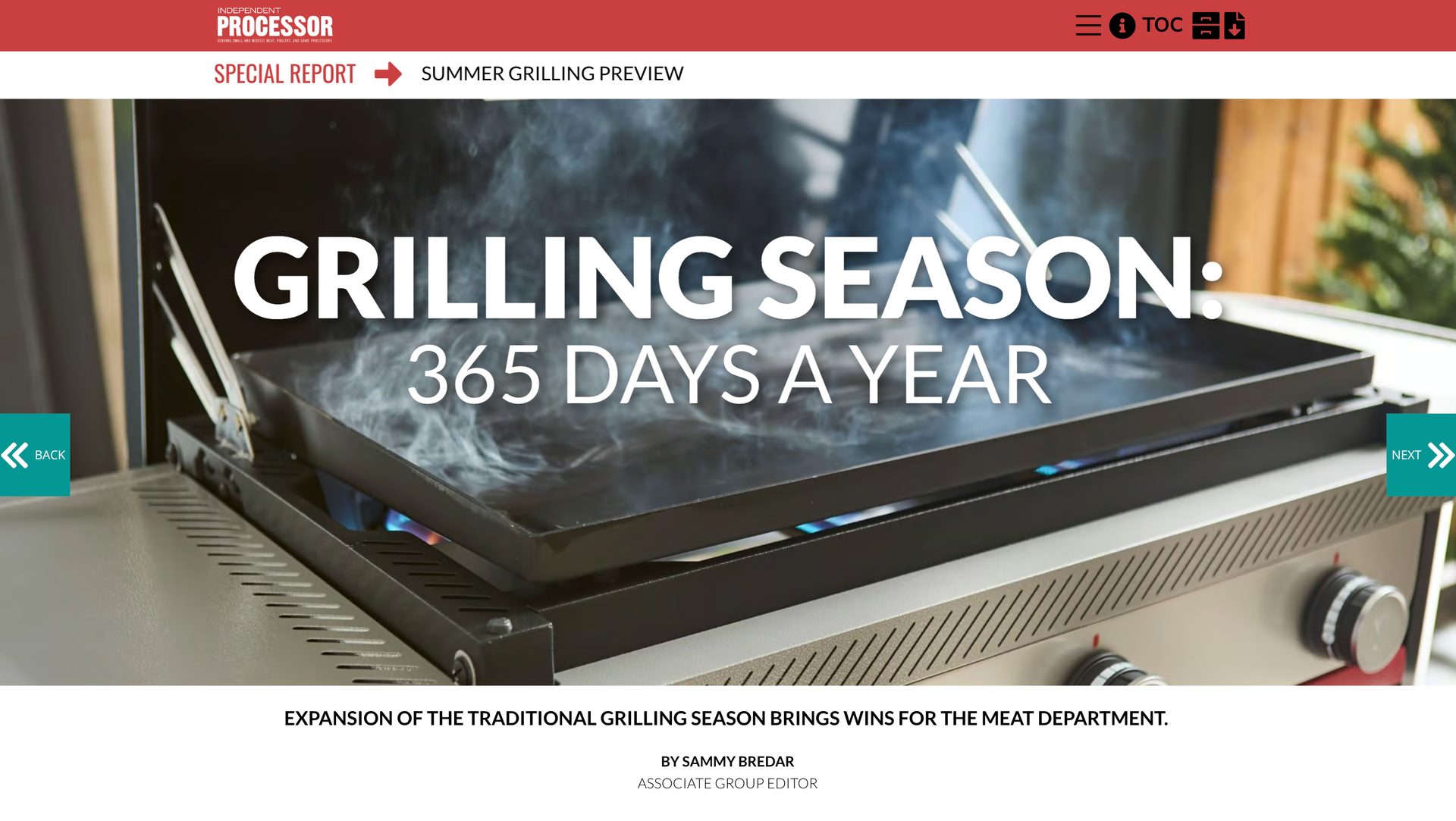
category report
RETAIL MERCHANDISING STRATEGIES FOR SMALL PROCESSORS
Engage and educate
Highly engaged e-commerce shoppers spend three times on meat and deli compared to in-store only shoppers.
Chief Editor
By Fred Wilkinson
For both e-commerce and in-store purchase occasions, educating customers can help smaller processors level up sales and solidify brand loyalty for existing customers.
“Digital penetration continues to grow for meat and poultry products, so digital merchandising should continue to grow in focus for these categories as well,” said Melissa Lobaugh, insights account director for market research firm 84.51°. Lobaugh said almost half of shoppers who purchase grocery items both in-store and online (omnichannel shoppers) expect everything to be the same in-store and online – including merchandising components like assortment and price.
“Many meat categories are growing digital penetration, which is the percent of dollars spent on pickup and delivery,” she said. “Highly engaged e-commerce shoppers spend three times on meat and deli compared to in-store only shoppers, so it is important to cultivate your brands with e-commerce shoppers. Digital strategies should be a focus for marketers of all sizes. Also, with digital activation, small marketers can make the most of their marketing dollars with more precise targeting and higher ROI tactics. “
Shoppers want to see a variety of sizes and price offerings to meet their household size and budget online, especially in meat categories vs. the more standard size and price assortment often seen in these categories online, she said.
To reach in-store customers, signage is great way to engage and educate shoppers, said Good Meat Project Executive Director Michele Thorne. The Good Meat Project, is a national nonprofit that supports marketplace innovation, connection and education across the meat supply chain to strengthen the economic viability of livestock producers that invest in sustainable production practices and animal welfare.
Thorne said the Good Meat Project offers consumer-focused educational resources such as its Bulk Meat Buying Guides to help educate consumers who are purchasing bulk meat directly from the producer.
“GMP's Good Meat Guide to Bulk Buying Beef will help your customers navigate the sometimes confusing ins and outs of buying whole or half meat shares from farmers and ranchers,” she said. “This toolkit includes simply designed graphics that cover common cuts and average amounts of each cut, carcass weight vs. edible meat yield and freezer space. There are also toolkits for buying bulk pork as well as for lamb and goat.”
Thorne said Good Meat Project' free consumer educational resources include the Lowdown on Cuts, Buying from Butchers and Basic Butcher Terminology.
“You can also share resources that help customers understand differences between tough and tender cuts so they can properly prepare and enjoy the meat they purchase from you,” she said.
Small processors marketing direct to consumers can leverage cross-promotional opportunities too, Lobaugh said.
“From an analytic perspective, convenient meals is the meat subcategory most often purchased in the same basket as meat snacks,” she said. “They have a strong relationship and cross-promotion potential. Marketers across meat, deli, poultry, meat snacks nuts and other grab-and-go proteins should complete similar analyses across their products to find brands and items shoppers are most often purchasing in the same basket. This will ensure that cross-promotional activations contain relevant products that households buy as complementary.”
Lobaugh said 81% of omnichannel shoppers prefer to buy frozen foods online vs. in-store.
“Couple that insight with the fact that 86% of shoppers cite convenience as the reason they shop online for grocery items,” she said. “Both of these factors have increased over the last three years, so consumers have higher expectations for items that save time and drive convenience.”
Photos courtesy: GettyImages / mesh cube / Getty Images Plus

